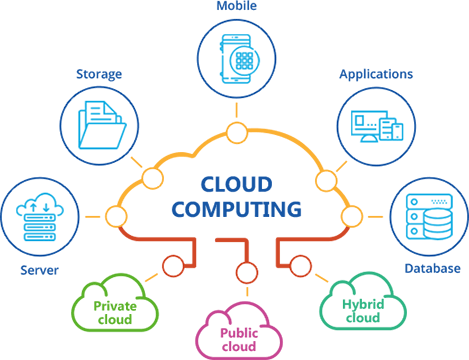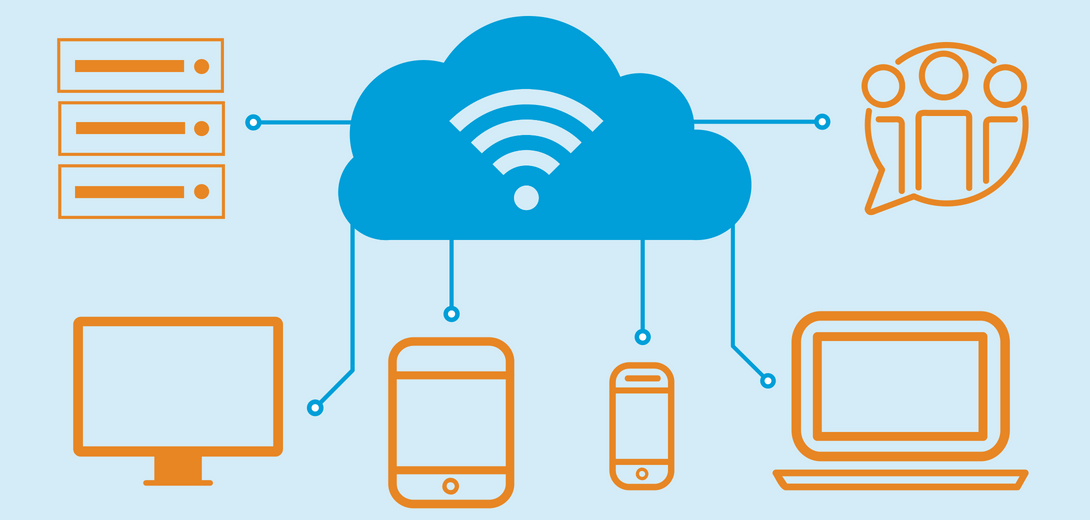Cloud Computing Platform Assignment Help
“Impact of Web 2.0 and Cloud Computing Platform on Software Engineering”
 Introduction
Introduction
The following research report is based on the selected article “Impact of Web 2.0 and Cloud Computing Platform on Software Engineering” by (Guha and Al-Dabass, 2010). This research report aims to analyse the impact of cloud computing and Web 2.0, particularly on software engineering. In this research report, cloud computing platforms and its implementations on IT infrastructure in the software industry will be studied. Further, this research report will study how the software industry is struggling with cloud computing considering the impacts and challenges of cloud computing on software engineering. Presently, Cloud Computing and Web 2.0 has immensely developed that has enabled new business models to adopt semantic web. Most of the businesses have leased out its computing platforms to Cloud Computing (CC). Because of its benefits, Cloud Computing has taken over the software development significantly. Lastly, this research report will discuss the difference between software engineers and cloud providers.
Discussion
With the developing IT infrastructure and semantic web, more business models have diverted its computing operations from software applications to cloud computing [1]. Semantic web such as Web 2.0 enables businesses to enjoy benefits of “Extensible Mark-up Language” (XML) that allows the data content to be read and processed by computers automatically. Other XML Web platforms like “Simple Object Access Protocol” (SOAP) and “Web Service Description Language” (WSDL) are capable of integrating computing platforms, operating systems and various programming languages that makes it much easier than the software [2]. Furthermore, CC and Web offer data exchange and data integration that can be accessed over the internet with geographically dispersed clients. Due to these web attributes and capabilities, most of the business models have adopted Cloud Computing and Web.
This article defined cloud computing as the idea of outsourcing the server, storage, software tools and techniques over the internet. There are three types of cloud computing, that are used depending upon the data and resources that are stored and shared. IaaS, PaaS and SaaS are the three types cloud computing that is commonly used by the businesses to store, retrieve and share the data and resources, and to avail programming and software services. As illustrated in Fig. 1, businesses decide from the three common clouds (private, public and hybrid) considering the amount of control it requires to secure or share with the tenants [3].

Figure 1: Cloud Computing Platforms [3]
Cloud computing is an integrated “service-oriented architecture” (SOA) of hardware and software resources that are virtually interlinked to different applications in the different operating systems. Because of virtualisation, the resources and data can be shared and accessed by multiple users [4]. Fig. 2 represents the virtual infrastructure that allows greater on-demand scalability, and effective resource management. Consequently, it also enables cost cutting and greener IT movement.

Figure 2: Virtual Infrastructure [4]
Other than the outward benefits, cloud computing has many other advantages. Cloud computing infrastructure is flexible and quick. It supports various protocols and allows a change in applications rapidly [5]. It can also deal with an increased performance like response time, scalability and application availability, and allows efficient resource management. It also offers elasticity of growth to its users. With such wide-ranging business models, several IT companies like IBM, Microsoft, Google, Amazon and HP are installing cloud computing [3].
On the other hand, the software industry faced several complications in dealing with the emerging computing environment. With the rapidly developing computing technology, software industry remained incompetent due to its heterogeneous platforms, non-user-friendly interface and inflexible to change attributes. However, the required improvements in software will ultimately increase the cost of the project later in the “software development life cycle” (SDLC) [6]. Therefore, the software engineers emphasised on continuous development in agile process models like Scrum, XP, and Crystal. Agile process models usually have shorter development cycles, where activities are time-boxed for within a few weeks. Agile process models can be competent to the Web 2.0 and cloud computing, if the software developers are motivated, talented and organised [6].
Article Highlights
From the analysis of this research article, it is evident that the present software process frameworks and models require interaction with cloud computing to perform more adequately. Since the agile business models included users, software engineers and customers; cloud providers can enhance its performance by supplying IT and computing infrastructure. Together, software and cloud computing can address to certain likely questions such as “how many software developers are needed?” cost estimations, budgeting and scheduling, risk assessment, quality assurance and change management and component reuse [7].
This research article suggested that software developers and cloud providers work in synergy to provide ideal computing infrastructure [8]. There are certain aspects in developing ideal computation infrastructure that is developed and controlled by software engineers such as component reuse, coding and testing. While, in some point, software engineers require web services support through cloud providers instead of acquiring them. Moreover, the maintenance phase also requires support from cloud providers. At many times, mostly when higher resource usage is demanded, for instance, applications are installed as “Software-as-a-Service” (SaaS) cloud providers works well because of its capability to manage the multiple resources [9]. However, cloud providers use virtualisation of data and resources to cater customers’ demand more efficiently. Therefore, cloud providers ensure quality of services to the customers.
From this article, it is also cleared that the interactions between cloud providers and the software engineers highly depends upon the type of cloud (private, public or hybrid) being used. For instance, in a private cloud, the business model is more controlled than public. It is usually ensuring the reliability and availability of applications. Moreover, the advantages of private cloud are said to have less interaction with the cloud providers which justifies high reliability, security and availability of resources [10].
This research article proposed an “innovative software engineering” in order to leverage the advantages and reducing challenges to improvise the computation framework. To do so, the researchers came up with the extended version of “Extreme Programming” (XP), which is an agile process model for Cloud Computing, namely. “Extreme Cloud Programming”. Figure 3 represents the proposed integrated model of “Extreme Cloud Programming”.

Figure 3: “Extreme Cloud Programming”
Moreover, this article suggested a software matrix in developing the “Extreme Cloud Programming” process model. The “Constructive cost estimation model” (COCOMO) was introduced for cost estimation of software projects. “This matrix was introduced by Tom DeMarco in 1997, to mitigate the chances of risks in the software projects.
The researchers in this research article carried out a test on cloud computing class of software projects to compare with the other categories. Through the test, the article concluded that cloud computing has made software engineering more difficult. For the software engineers there is a room for plenty of efforts needed to compete with the cloud computing. Furthermore, this article also introduced the new agile process which emphasise on the interaction with cloud providers that can significantly reduce the challenges in software development in cloud computing platforms. By doing so, software development can become more effective and advantageous for the businesses to rely on.
Conclusion
Due to increasing popularity of cloud computing, several IT businesses have shifted their focus from complex and complicated software to Web 2.0 and cloud computing platforms. Through cloud computing, businesses are effectively managing its data and resources. Cloud computing provides numerous advantages to the customers like availability and flexibility, with significant reduced cost. For these reasons, cloud computing and Web 2.0 have tremendously grown in a few years. Cloud computing enables customers to align their physical resources and presenting and sharing them virtually with the end-users. Cloud computing platform intends to offer efficient resourcing, and stagging that can be easily accessible by the customers regardless of geographical dispersions. Cloud computing has become the most adopted paradigm to cater the complex functions in the modern computing world. In contrast to software installation, cloud computing offers initial investments since the users only pays for the services they need. Unlike software, cloud computing is found much more flexible and secure.
Apparently, cloud computing seems more efficient than software for every field. However, from this research article, it is evident that in software engineering, the integration of both, cloud computing and software development is meaningful. The research article studied introduced “Extreme Cloud Programming” that is a proposed process model for interactions between software and cloud computing. It is cleared from the article that software developers struggle and strives through many challenges in competing with the cloud computing, but the interactions with cloud and improvement in software development can significantly impact on software engineering.
Embark on a transformative learning experience with Assignmentstudio’s Professional Assignment Help on Innovation: Cloud Computing. Our specialized assistance empowers students to excel in harnessing the potential of cloud technology, driving innovation and success in their academic endeavors

References
[1] D. Kreutz, F. Ramos, P. Verissimo, C. Rothenberg, S. Azodolmolky and S. Uhlig, “Software-defined networking: A comprehensive survey.,” Proceedings of the IEEE, vol. 103, no. 1, pp. 14-76, 2015. Retrieved from: https://sci-hub.tw/https://doi.org/10.1109/JPROC.2014.2371999.
[2] C. Garcia and R. Abilio, “Systems integration using web services, rest and soap: a practical report.,” Revista de Sistemas de Informação da FSMA, vol. 1, no. 19, pp. 34-41, 2017. Retrieved from: https://www.researchgate.net/profile/Cristiano_Garcia4/publication/317729856_Systems_Integration_Using_Web_Services_REST_and_SOAP_A_Practical_Report.pdf
[3] S. Schneider and A. Sunyaev, “Determinant factors of cloud-sourcing decisions: reflecting on the IT outsourcing literature in the era of cloud computing.,” Journal of Information Technology, vol. 31, no. 1, pp. 1-31, 2016. Retrieved from: https://link.springer.com/article/10.1057/jit.2014.25
[4] M. Díaz, C. Martín and B. Rubio, “State-of-the-art, challenges, and open issues in the integration of Internet of things and cloud computing.,” Journal of Network and Computer applications., vol. 67, pp. 99-117, 2016. Retrieved from: https://www.sciencedirect.com/science/article/pii/S108480451600028X
[5] V. Storey and I. Song, “Big data technologies and management: What conceptual modeling can do.,” Data & Knowledge Engineering, vol. 108, pp. 50-67, 2017. Retrieved from: https://www.sciencedirect.com/science/article/pii/S0169023X17300277
[6] P. Isaias and T. Issa, “Information system development life cycle models.,” High Level Models and Methodologies for Information Systems, pp. 21-40, 2015. Retrieved from: https://link.springer.com/chapter/10.1007/978-1-4614-9254-2_2
[7] L. Cui and Q. Yan, “When big data meets software-defined networking: SDN for big data and big data for SDN,” IEEE network, vol. 30, no. 1, pp. 58-65, 2016. Retrieved from: https://sci-hub.tw/https://doi.org/10.1109/MNET.2016.7389832
[8] H. Truong and S. Dustdar, “Principles for engineering IoT cloud systems.,” IEEE Cloud Computing, vol. 2, no. 2, pp. 68-76, 2015. Retrieved from: https://sci-hub.tw/https://doi.org/10.1109/MCC.2015.23
[9] V. Chang, Y. Kuo and M. Ramachandran, “Cloud computing adoption framework: A security framework for business clouds.,” Future Generation Computer Systems, vol. 57, pp. 24-41, 2016. Retrieved from: https://www.sciencedirect.com/science/article/pii/S0167739X15003118
[10] T. Islam, D. Manivannan and S. Zeadally, “A classification and characterization of security threats in cloud computing.,” Int. J. Next-Gener, vol. 7, no. 1, 2016. Retrieved from: https://www.researchgate.net/profile/Tariqul_Islam16/publication/308172311_A_Classification_and_Characterization_of_Security_Threats_in_Cloud_Computing/links/57dc38cf08aeea195935c51f/A-Classification-and-Characterization-of-Security-Threats-in-Cloud-Computing.pdf.



